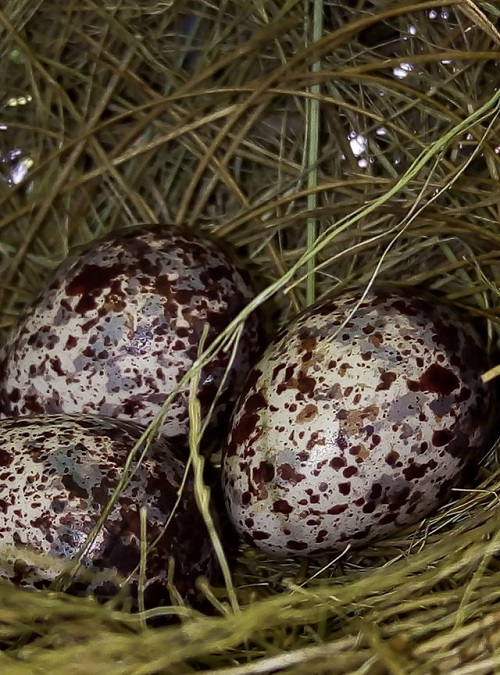FWP:
For background see S. R. Faruqi's choices. For more on Ghalib's unpublished verses, see the discussion in {4,8x}.
What are the connections among the garden's envy, the image, and the tumult/fame in the first line, and the mirror and the Nightingale's egg in the second line?
Asi and Zamin feel that the mirror itself is so madly inspired by having the beloved's beauty reflected in it that it becomes a Nightingale's egg (that is, the source of future lovers). Gyan Chand proposes that the beautiful woman uses a mirror while adorning herself, so that the mirror is complicit in her beauty; her beauty then creates or generates lovers among those who behold her, the way the Nightingale becomes a lover of the rose. Thus the mirror (as an accomplice) helps to create new (human) lovers, the way a Nightingale's egg is a means for creating new (avian) lovers.
Both readings have problems. But is it possible to do much better? Even if we confine ourselves to the second line, what do the mirror and the Nightingale's egg have in common? Should we think of a glass mirror (on this see {16,2}), so that both mirror and egg are breakable? Should we think of the mirror as 'opening an embrace' (as in {230,4}), seeking to curve protectively around the beloved's image the way an egg shelters the life within it? After all, we know that the mirror can seek to grow eyelashes (as in {17,4}), can feel agitation (as in {29,7x}), can play host to polish-lines that flutter their wings (as in {113,6}), can become the eye of a prey animal (as in {122,2}), can be capable of speech (as in {173,5}), and can do all sorts of other odd things. The mirror abounds in versatile imagery, but the present verse doesn't effectively evoke or engage any particular lines along which the imagery could flow. Zamin is right that the verse's patterns of imagery have not been effectively established or 'proved'.
Compare this verse to its published cousin, {217,4}, which is much more successful. While {217,4} leaves plenty of 'mood' room for alternative readings, it provides the kind of richly interlocked imagery that forms a satisfying texture, and it also offers a kind of trajectory for the imagination (lament = world = dust-handful; sky = bird's egg). Perhaps that's why the poet decided to include the one verse, and not the other, in his published divan.

Asi:
Oh Lord, the reflection of which envy-of-the-garden has created madness in it, such that the mirror seems to be the egg of a Nightingale? It's clear that the Nightingale is the lover of the rose, and the egg of a Nightingale is the cause of creation of a Nightingale-- through which passion will grow. That is, the mirror has become the essence of passion.
== Asi, pp. 263-264